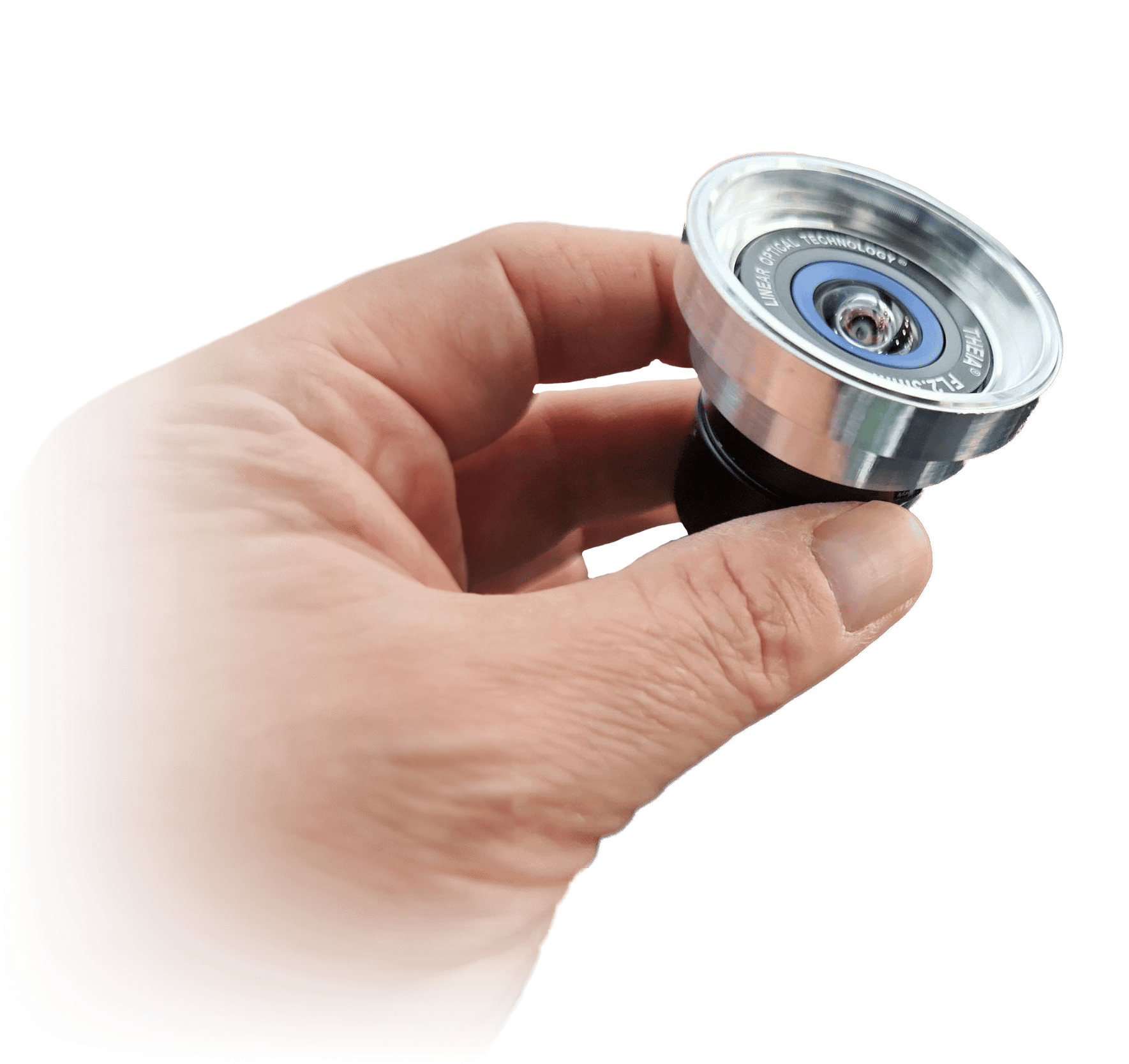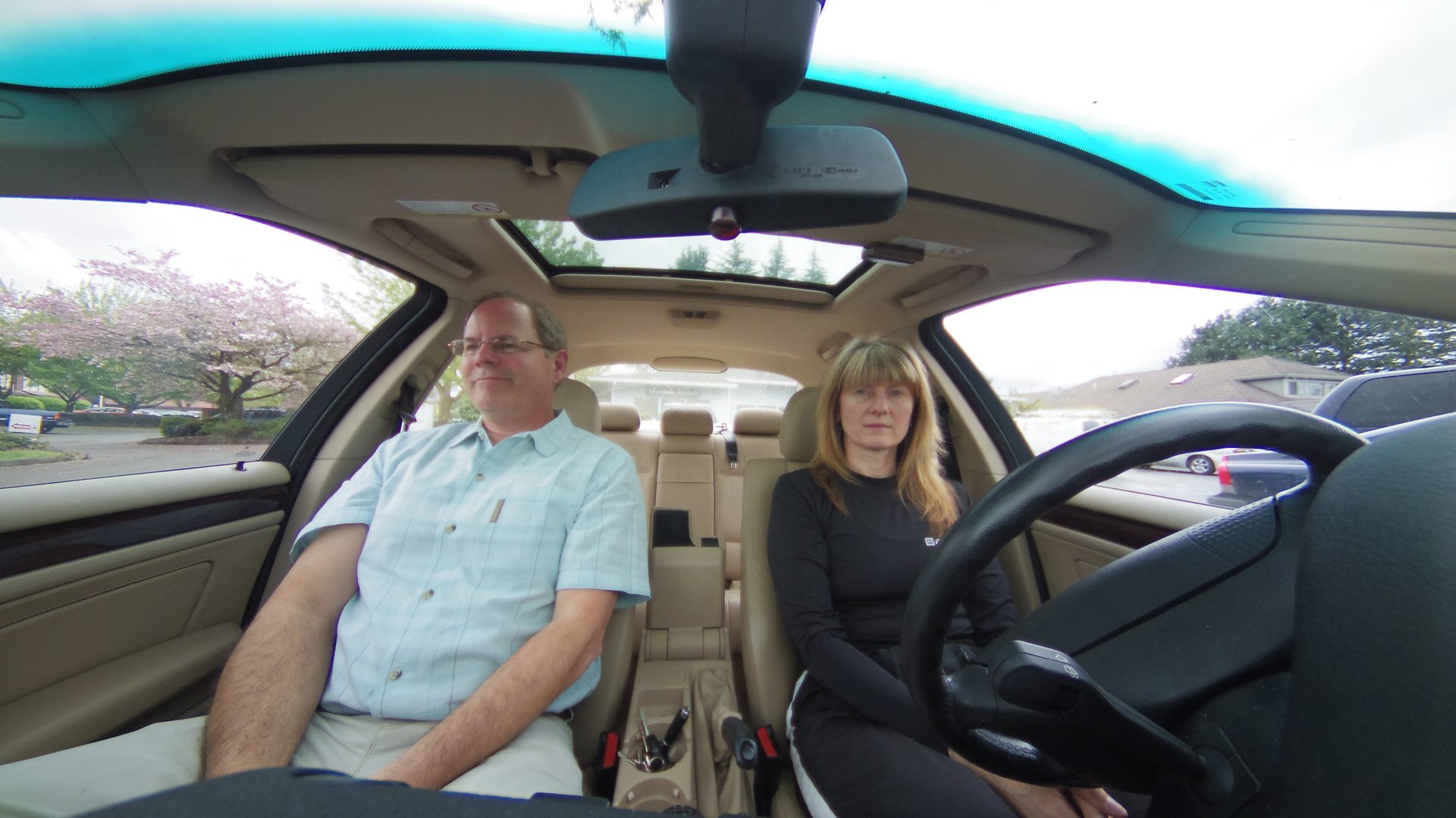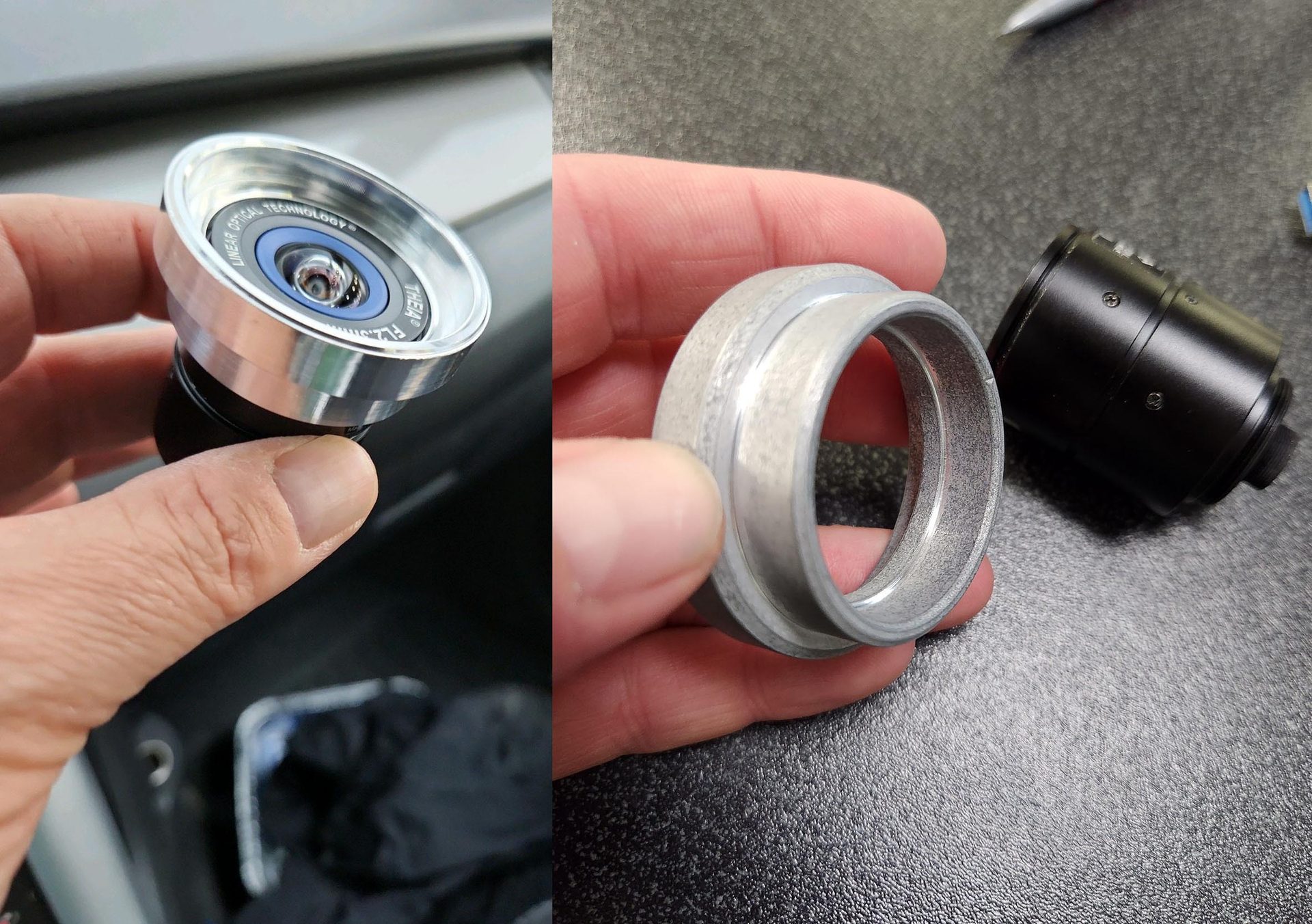Case Study
Vision & Sensors
V&S
H2 Deck By Bold Name
h2 xxxxxx
H1 xxxxxx
h2 xxxxx


The results are speaking for themselves. By Andrea Van Landingham and Jon Boucher
Ultra Wide, No Distortion Lenses Tough Enough for
Crash Testing
In the field of automotive crash testing, high-speed cameras are crucial for capturing and analyzing the dynamics of impact. Imaging systems require a variety of features to not only withstand violent environments, but also capture crisp, clear images often in tight spaces, with the precision needed for accurate crash observation. That’s where Theia Technologies’ lenses with patented Linear Optical Technology comes in. Theia’s lenses with patented distortion technology have consistently been chosen for their unparalleled wide fields of view and very low barrel distortion. Theia’s ML183M lens with a 1.8 – 3mm focal range offering up to 120° horizontal field of view with less than 1% barrel distortion and 5+ megapixel resolution has found a home in vehicle crash testing since 2018. And their newest MY23F lens improves upon these features by adding ruggedization that allows it to survive impact at 50 miles per hour, while capturing high resolution, wide angle, and undistorted images of vehicle impact.
Steve Wiley of RingSide Creative is one of the biggest buyers of high-speed cameras in the crash test industry, currently using around 130 high speed cameras priced at up to $35,000 each and used for crash test analysis conducted for a major automotive company. Wiley purchases high-quality ruggedized lenses from RMA Electronics, for integration with cameras like Vision Research’s Phantom Miro C210J. RMA Electronics, a worldwide distributor and technology advisor of industrial machine vision and security lenses, recommends precision lenses durable enough for Wiley’s crash tests, such as Theia’s lenses with patented Linear Optical Technology. These lenses correct barrel distortion optically by creating a rectilinear image, where there is no curving of the image nor compression at the edges, increasing image resolution and keeping straight lines straight, eliminating the need for post processing software to correct distortion. RMA President Ron Massa Jr. states that, “When we were approached by Wiley with a need for a wide-angle lens capable of excellent near focus resolution performance, we immediately thought of Theia’s patented optics. We’ve been their distributor since 2014 and have such low returns and great customer satisfaction in those applications we thought it would be a great fit; and we were right!”
And Wiley agrees, saying that the wide angle and optical performance are what set him on the path to selecting the ML183M lens for use in over 3,000 crash tests. The ML183M is crucial in capturing car interior views where there is limited space to place a camera, such as footwells, instrument panel views, or as Wiley describes, “anywhere there’s no room for a normal lens or limited space to get a wide field of view shot. In confined spaces where you need a wide-angle view, this is the lens that excels.” (See figure 1.)

Figure 1. Instrument panel view of car interior with ML183M, showing the 120deg ultra wide angle imaging, low distortion and high resolution capabilities of Theia’s Linear Optical Technology lenses. Source: Theia Technologies
Excited about the ML183M’s close focus, ultra-wide angle, and high resolution capabilities, Wiley invested in the lens durability by increasing the ruggedization needed for industrial crash environments. Using a local optical engineering company, he built a custom metal barrel, housing, and a machined aluminum lens hood for further protection from shock, vibration, and flying debris. He also converted the varifocal ML183M to a fixed focal lens as Wiley reasons, “fixed focal lenses are preferred to zoom lenses because when the crash test vehicle hits the target, the zoom will move and go out of focus, getting loose.”
With the release of Theia’s new ultra-wide, no distortion MY23F lens, the need for these customizations decreases (see Figure 2). The MY23F lens’ mechanical design and construction are optimized to create an industrial ruggedized optic where the lens elements are fixed in a metal housing, eliminating element shift during vibration and shock. Wiley’s most violent tests are in the 50G range, and the MY23F is tested and certified to withstand shock up to 50G in each of the ±Z axes as well as vibration up to 200Hz at 10G, improving performance in the crash test environment compared to its predecessor. The result was a reduction in additional component manufacturing, time, and cost, while still providing ultra-wide undistorted images; the MY23F still requires a lens hood to deflect flying debris from damaging the front element of the lens.


Figure 2. The left image shows Theia’s ML183M, and the additional metal barrel, housing, and lens hood required for additional protection during crash testing. The right images show Theia’s MY23F and the single additional component needed to protect the lens – the aluminum lens hood. Source: RingSide Creative
Additionally, the MY23F lens mount is integrated into the lens barrel, decreasing the chance of breaking apart during impact. This is important in crash testing because according to Wiley, “the most common break during crash testing is at the mount. The mount will pull out of the lens when hit by loose objects during the test; with the MY23F and its integrated mount, I suspect this won’t happen.”
The results are speaking for themselves. Wiley says, “I have used the newly released MY23F on at least 45 tests so far [as of October 2023] without any problems. I have been having my people place it in different positions in the vehicles, so the forces are on all axes. The lens holds focus and seems unaffected by the forces. The image quality is very good.” The lens is performing so well that Wiley says they are considering using the lens in more places during testing, such as under vehicle shots.
Wiley also says the lens does well with respect to lens flare. On many tests they shoot directly into the very bright specular lights, and while the contrast goes down some, the lens still performs very well. This is not surprising as Theia’s lenses are made with low dispersion glass types and anti-reflective coatings to optimize optical performance in a variety of challenging lighting conditions.
Until now Theia’s patented Linear Optical Technology and its advantages have only been available for up to 1/2.3” image sensors. With the new MY23F lens, this technology can now be employed with the larger 1/1.8” sensors that are popular for their larger pixels, greater light gathering ability and dynamic range. With its 5+ megapixels 200lp/mm resolution performance in both Visible and NIR light, and rugged design, the MY23F lens is without peer in machine vision today. The MY23F’s 116° horizontal field of view and .5% barrel distortion make it the widest, low distortion lens for 1/1.8” imagers on the market.